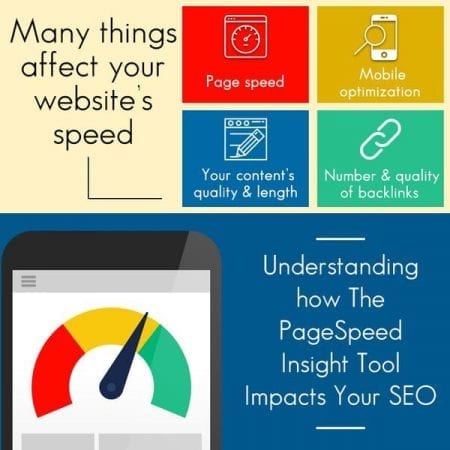 When your pagespeed insight score isn’t quite perfect, you may find yourself wondering what’s wrong. While this is a useful tool for pinpointing key technical issues with your website that negatively impact its speed and performance, but there’s still the question as to whether it’s a good representation of your website’s speed and performance.
When your pagespeed insight score isn’t quite perfect, you may find yourself wondering what’s wrong. While this is a useful tool for pinpointing key technical issues with your website that negatively impact its speed and performance, but there’s still the question as to whether it’s a good representation of your website’s speed and performance.
Understanding the PageSpeed Insight Tool
Google offers you this tool to use in analyzing your website’s performance. It works by fetching your URL twice – once with a mobile user-agent and once with a desktop user-agent. You’ll then receive a score in two categories:
- Speed, based on things like enabling compression, improving server response time, leveraging browser caching, minifying resources, optimizing images, and removing render-blocking
- Usability, based on things like configuring the viewport, adjusting the size of your content to fit the viewport and using legible font sizes.
Why use PageSpeed Insight
This is a great way to gauge your website’s performance, especially its speed and how the user experience is. The biggest reason this matter is user retention – people won’t stick around or use poorly designed, slow loading websites.
This also matters because of search engine optimization (SEO). Well-optimized websites acquire more organic traffic, which is one of the most valuable forms of traffic you can receive.
While all of this is great, it doesn’t indicate how fast your site is, how well it performs, or how easy it is to use. This is because you merely receive a list of technical issues that may affect your website’s speed and user experience, but it doesn’t tell you for sure if those technical issues are affecting your site. It also doesn’t tell you how much time it takes to load the pages you analyze. This means you can spend lots of time fine tuning and tweaking your website but this won’t necessarily increase your conversions.
Understanding the Importance of a Good Performance Score
Clearly, you can see that a good performance score isn’t very important for your SEO. Many things affect your website’s speed, user experience and overall ability to make conversions, including:
- Page speed
- Mobile optimization
- Your content’s quality, length, and relevancy
- Number and quality of backlinks
- Anchor text
- Email opt-in forms and where they’re placed
- Use of relevant opt-in incentives
These things are all more important than your PageSpeed Insight score, which is why seeking the “perfect” score is a waste of time and resources. Of course, this doesn’t mean you should abandon this tool altogether. It just means you shouldn’t chase a score that may not help you achieve your business goals. Even Google will admit that the PageSpeed Insight tool doesn’t account for all the factors that affect a page’s speed and so it isn’t completely representative of the real-world user experience. As such, you should simply use it as a diagnostic tool. Doing so will help you determine what may be causing slow loading times, high bounce rates and low conversions, but even then, you should still be cautious. This is because there are still some websites that are “lazy” when it comes to the PageSpeed insight tool but because they have good SEO they still do quite well.
Ways to Success
It’s possible that you may do all kinds of optimization and still have problems with things like load times, bounce rates, and conversions. If you don’t know why you’re having such issues, you shouldn’t try to optimize your page even further. Instead, you should get some professional help from Local SEO Company. They’ve been in business for so long that they’ll be able to easily identify and correct your problem so let them look at everything for you today.
